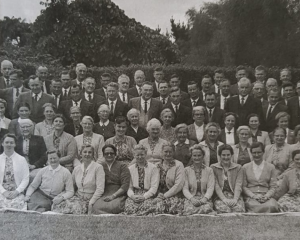
Keen hunters Michael Scott and David Grove have developed a system where a sensor mounted on a rifle scope emits pulses of infrared light. When it senses compatible clothing it flashes and sounds a warning.
The sensor has a range of up to 150m although most shooting accidents happened at a range of less than a third of that.
The Infrared Retroreflector Identification System was invented by Scott and Grove who thought it up when they were hunting deer in the Nelson Lakes area.
Hunter Safety Lab, the company founded by Scott and Grove, has just started selling the system in New Zealand after years of refinement and last night won a Purple Pin (or supreme award) for product design in the 2014 Best Design Awards. The next step is cracking the United States market where there are an estimated 20 million hunters.
Scott said the system didn't replace hunters' ultimate responsibility for identifying targets but allowed them to use technology to help them do it.
He said about two out of three hunting accident victims were shot by someone in their own hunting party.
The sensor runs off its own AA lithium battery and picks up retro-reflective patches incorporated into IRIS-detectable vests and caps. The bigger the patches, the more effective it is.
In the 10 years to June, 19 people have died and 57 have been injured by firearms in New Zealand. "Some other people have thought about this already, the patent records go back about 20 to 30 years, but they have struggled with making them easy to use," said Scott.
The sensor on the rifle weighs just 70g and does not affect the function of the weapon.
Scott said the company was talking to a European gun manufacturer about incorporating the technology into the stock of the rifle rather than having it retro-fitted.
The pair are trained industrial designers. Scott worked in web design for about eight years and Grove worked as a designer for companies such as phil & teds baby buggy company.
They have recently returned from a 6500km road trip around the United States where they visited big hunting stores.
Judges' convener Tony Parker, a professor of industrial design at Massey University, described the project as an "outstanding design solution to a deadly, emotionally charged problem for game hunters world-wide". "We're impressed that through new application of known technologies and intuitive easy to use ergonomics, the IRIS represents a potential life-saver."
The IRIS system sells for $399 which includes the sensor for the firearm, the mount, and the detectable vest. It is made in Thailand.
Other supreme winners at the Best awards were:
Spatial -- Kenwyn HQ, IMO Group
Graphics -- Studio One Toi Tu, Alt Group
Interactive -- Kiwibank Home Hunter app, Springload
Nga Aho -- Te Uru Taumatua, Jasmax
Best Effect -- F&P Simplus, Fisher & Paykel Healthcare
*******************
How it works
Sensor on a rifle scope emits pulses of infrared light.
Flashes and sounds a warning when it senses compatible clothing.
Runs off AA lithium battery with a range of up to 150m.
By Grant Bradley of the New Zealand Herald












